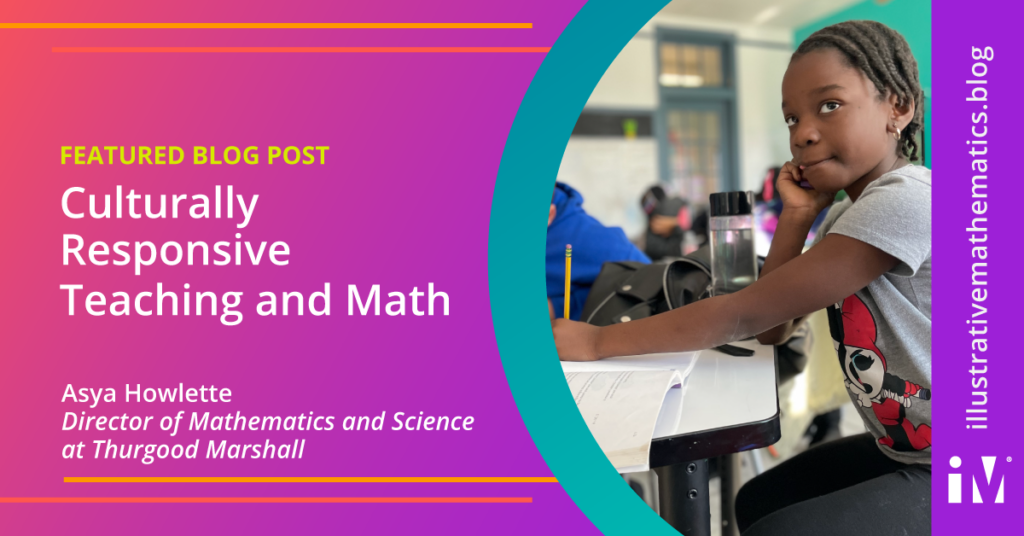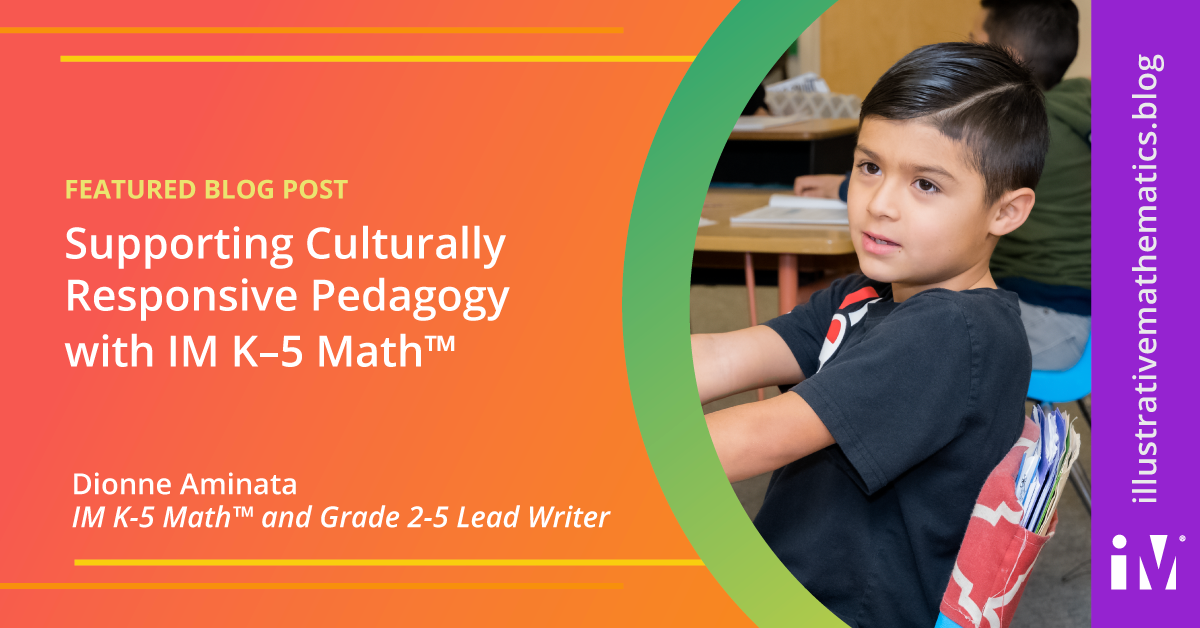By the IM Team
And just like that, school is back in session! Whether you are implementing the IM curriculum for the first time or getting a fresh start as you experience year two or three, the beginning of the year is the time to establish norms that create the conditions for students to know, use, and enjoy mathematics. As you build community and establish your classroom culture, it is equally important to consider the cultures represented by your students and their families. Incorporating students’ funds of knowledge and cultural experiences will not only enrich your community, it is also critical to supporting students with processing information and learning new concepts.
The start of the year can be daunting, with the classroom set up, getting to know your students, staff meetings, and administrative tasks, so time for planning is often limited. While you will not have time to internalize every lesson and plan for every scenario, it will be important to familiarize yourself with the curriculum’s structure. This will help you easily find the resources that support your planning and instruction, saving you time. It is also important to understand the overarching mathematical story, so you can work toward the goals for the year.
Our back-to-school kickoff continues with two posts about the features that support culturally responsive math instruction and our Story of the Grade series, which tells the coherent mathematical story of each grade in K-5 so you can plan with the end in mind.
Building Community: Culturally Responsive Math Instruction
“We can use our students’ cultural learning styles and tools to leverage the brain’s memory systems and information processing structures.” —Asya Howlette
Culturally Responsive Teaching and Math
By Asya Howlette, Director of Mathematics and Science at Thurgood Marshall
Raise your hand if you have been perplexed by professional learning that told you your class needs to be culturally responsive, but left you completely unsure about what that means in a math class. Yup, been there, done that! Often the techniques, tools, and suggestions are aimed at courses where, traditionally, students write many papers and have robust discussions about the world—the humanities. I, like many other math teachers across the country, have found that this may stem from a misconception about what culturally responsive teaching is. There are universal methods for integrating its tenets into our teaching practices. Educators teaching with IM K–12 Math are fortunate because IM’s language and instructional routines support culturally responsive pedagogy. This can open a door of opportunity for us to prepare students for active citizenship—to be able to critically analyze society. (Read more…)
Building Community: Features that Support Culturally Responsive Math Instruction
“Understanding that there are cultural differences in the way learners make meaning is the first step.” —Dionne Aminata
Supporting Culturally Responsive Pedagogy with IM K-5 Math
By Dionne Aminata, Senior Director, Strategic Initiatives, Illustrative Mathematics
Amanda Gorman recited her poem, “The Hill We Climb,” on Inauguration Day. Her words were not only inspiring, but a piercing call to action. I thought about my work at IM and wondered what a commitment to “all cultures, colors, characters, and conditions of man” meant in my role. As a lead writer for the IM K–5 Math curriculum, I was dedicated to figuring out how we could infuse culturally relevant and responsive pedagogy. Our elementary writing team was committed to providing all students with opportunities to see themselves in the curriculum. As I reflect on what we accomplished, I stand tall knowing we were ready to answer Ms. Gorman’s call. (READ MORE)
Understanding the Mathematical Story of the Grade
“From the start of the year, we want students to know they are capable of engaging in grade-level mathematics.” —Sarah Caban
The Story of Kindergarten by Alex Clayton
The Story of First Grade by Brianne Durst
The Story of Second Grade by Mike Henderson
The Story of Third Grade by Mike Henderson
The Story of Fourth Grade by Patti Drawdy and Yenche Tioanda
The Story of Fifth Grade by Sarah Caban
Next Steps
As you start the school year, we want you to know that we are here to support you on your journey with stories of hope and success with the IM Experience. Check out IM’s Stories of Grades K–5 free ebook! Be on the lookout for more back-to-school blog posts throughout August and September.


